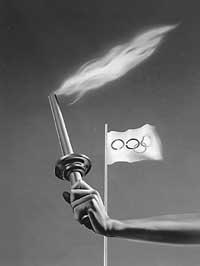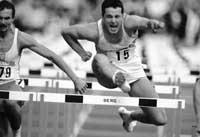Doping, result of sports competition
1999/05/01 Kortabarria Olabarria, Beñardo - Elhuyar Zientzia Iturria: Elhuyar aldizkaria

The progress produced by the increasingly close relationship between sport and science is undeniable. Think about what has been advanced in sports tools, clothing and materials in a few years. To realize this, just look at the look of seasonal and current athletes. Remember the bikes used by Txomin Perurena and so on, and compare them with those used by Abraham Olano to see how much progress has been made in appearance, weight, aerodynamics and comfort. Look at the shoes, shops and clothing they brought in the first expeditions to the Himalayas and look at the current ones. All advances are a consequence of the technical and industrial approach to sport.
As for the diet and physical preparation of athletes, something similar can be said. The harrijasotzailes or aizkolaris who before going to the square practiced txuleta-jana have remained in place; the athletes who on the eve of the day of the competition performed great training are also in place. Athletes make strict diets, adapted to their characteristics and the sport they practice; they perform controlled training sessions from top to bottom, previously planned with the help of sports technicians and doctors, performing repeated controls of the body response, measuring everything. All that is said is for professional athletes, but for those who start things have changed a lot, since from childhood you can go to sports schools and prepare step by step.
However, in this description of the developed sport there is a point that questions the possible development, which goes beyond training: doping, which is becoming something common in the sports sessions of the media.
Doping as a balance factor
According to the International Olympic Committee, doping is taking foreign substances to the body to improve its physical performance, or taking non-foreign substances by unconventional methods. For ethical and health reasons, doping is prohibited in sports. In fact, one of the pillars of sport when it comes to racing is parity, and doping breaks that parity. On the other hand, although it suddenly improves the performance of the human body, it is considered that length is harmful, since certain products considered have dangerous side effects.

Although the history of doping is ancient, its excessive use has increased since 1945. Knowing that doping broke the competitive balance, drug use in sport was not banned until 1967. It was considered a trick, but it was not forbidden. That year the British cyclist Tom Simpson participated in the Tour de France and died when he climbed the port of Mont Ventoux. Subsequent studies showed a high presence of amphetamine in the body. The prohibition of doping came after the echo of the death of the Briton. The anti-doping controls were implemented in 1972 at the Munich Olympics. However, doping is not currently prohibited in all sports, for example in tennis there is no control.
Doping controls are performed once the sports session is over, taking urine samples. The sample has a code and a stamp. One part of the sample is immediately analyzed and the other is preserved, even if a second analysis is necessary. The laboratories analyze urine samples, gas chromatography, high pressure liquid chromatography and mass spectrometry techniques. Blood tests are also done in cycling due to the onset of EPO. These are the ways that have so far been used to perform the analyses and that, if necessary, they must modify them for the future, since in this way you cannot control all existing doping types.
Types of doping
Regardless of tobacco and alcohol, until now doping substances have been divided into 6 categories: narcotic analgesics, stimulants, beta-blockers, diuretics, polypeptide hormones and anabolic steroids. In addition to these sections, currently you can also talk about blood doping and also erythropoietin.

Narcotic analgesics are used to relieve pain caused by injuries and illnesses and increase the threshold for analgesia. They originate physical and psychic dependence, so they are very harmful in the long run.
Stimulants are used to relieve fatigue, improve blood circulation, increase oxygen availability and encourage aggressiveness and passion for competition. They generate a physical and psychic life that generates advantage over competition. After the use of stimulants more than one athlete has died. In this group of stimulants, amphetamines and their derivatives, ephedrine and their derivatives and caffeine are the most used. Stimulants are very available, for example, in the chemical composition of several drugs that are used to weaken flu symptoms. Of course, athletes who must undergo doping controls should take it into account. Although caffeine is part of this group, its usual use — in coffee, soft drinks with cola… — is not dangerous for athletes, since to give positive control it would be necessary to take more than ten coffees. Excessive use of stimulants has harmful effects such as tachycardia, hypertension, insomnia, hallucinations and death.
Beta-blockers are used in medicine to fight heart disease, hypertension and arrhythmias. Above all, accuracy and pulse are used in basic sports such as billiards or archery, which help to alleviate tremor, anxiety and nervousness. Frequent use of beta-blockers by people without heart problems can cause hypotension and fatigue. They can also cause a heart attack.

Diuretics help remove organic fluids. In medicine diuretics are used to combat fluid retention, heart, liver and kidney problems, and the stress of the day before menstruation, while in sport other drugs are used to cover or in heavy sports (boxing, judo, karate) to compete with lighter ones, since water loss causes weight loss. Because the body has to build up fluid before, during, and after sports, excessive fluid loss can lead to dehydration. This can cause dizziness, muscle cramps, nausea and headaches, and eventually damage the kidneys and heart to death.
Finally we have anabolic steroids. Steroid hormones are born spontaneously in male and female organs. Hormones, including testosterone, are responsible for the functioning and growth of male sex organs in the human body and the masculinizing effect. These effects are called androgenic and androgenic male sex hormones. They are responsible for the development of muscles acting on the body anabolic way. Until now, anabolic steroids have not been developed, all of them of secondary androgenic effect. Anabolic steroids have been used in anti-anemia medicine, bone diseases and some types of cancer, as well as in males with little hormone problems.
Supplemented with precise training sessions and a proper diet, anabolic steroids result in increased protein production in the body, increasing muscles and therefore strength. This allows athletes to enter more and more strongly, and recover faster. They have been used mainly in short-lived and high-intensity sports. However, by increasing aggressiveness and accelerating the synthesis of red blood cells, they can help to overcome higher training loads without falling under stress. Therefore, they have also been used in long-lasting sports.
The use of anabolic steroids has many risks: hypertension, jaundice, tumors, bloodshed, poor liver work, blocking bone development, paranons, infertility and impotence. They can cause alterations in sexual organs and menstrual alterations in women. At the same time, in women can develop male characteristics such as hair on the face, acne and voice strengthening. Although you stop taking steroids, the process of these changes does not stop. They are not believed to generate physical dependence, but psychic dependence.
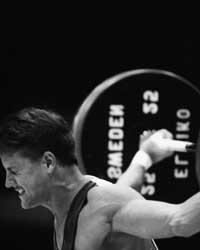
One of the best known anabolic steroids is Clenbuterol. Clenbuterol has been used to illegally fatten animals and in medicine to combat asthma. But they have also used it to dop because the musculature increases. In the long run it is not known what its effect may be, but if it is taken a lot, tachycardia, nervousness, insomnia, anxiety, increased venous pressure and headache are causing factors. An example of a Clenbuterol condition: In 1992 169 people from Catalonia suffered the symptoms described by eating beef fattened with Clenbuterol. Three farmers were therefore judged.
The use of polypeptide hormones has similar effects, as muscles and tissues are strengthened. One of the most used is growth hormone. Growth hormone occurs spontaneously in pituitary, in a small gland located under the brain. This gland secretes the hormone into the blood and carries it to different organs, including the muscles. This substance produces the increase of various tissues, by transferring the amino acids from the cell to the cell. In addition, growth hormone promotes protein growth and affects the metabolism of carbohydrates and lipids. Growth hormone helps to lose weight, but without affecting the number of proteins and the size of muscles. Growth hormone also has the advantage when it comes to doping, since at 40 hours of its consumption disappears completely. Therefore, its detection is practically impossible.
Blood doping
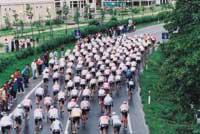
Red blood cells carry oxygen. At one time, before the competition, the blood enriched in the red blood cells, which for a time had gone out to the athlete in height and subsequently stored, was introduced by the veins. At that time the athlete had more red blood cells, so he could carry more oxygen to the tissues. Nowadays it is not done, the erythropoietin order of this practice is used.
Erythropoietin or EPO is a natural hormone that orders the production of red blood cells, which hinders its artificial creation. The solution to the gene that sends EPO is to send it to another being, usually a bacterium, and remove it from it. This results in synthetic EPO.
Synthetic and natural EPO cannot be differentiated so an excess of EPO does not necessarily mean doping. For example, this increase in EPO can be achieved by training in a high altitude location. The effect of synthetic and natural EPO is the same. The increase in blood cells increases the viscosity of the blood and as it costs the heart more to pump increases the venous pressure. Therefore, sports are not allowed above a certain number of red blood cells. To demonstrate this type of doping the usual urine controls are not suitable, so it has been commented that this is an uncontrolled doping. To know the number of red blood cells in cycling, blood tests are performed, often in unsuitable conditions for cyclists, who wake up early in the day. The parameter representing the percentage of red blood cell volume is hematocrit. In blood tests, serum is usually 55% and hematocrit is 45%. When the hematocrit rises more than 50% in cycling, it is decided that there is doping. The cyclist has to leave the race and cannot compete for a month.
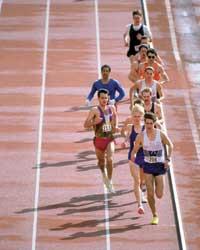
The punishment is less than conventional doping. In fact, the hematocrit test is not correct, because, for example, training in height can produce a lot of EPO, so the hematocrit can be high and the hematocrit may actually be high. However, a lower level does not mean that EPO has not been taken, as a way to avoid blood studies has been found: introducing serum through the veins when a blood test is known to be done, thereby diluting the blood.
To say that there is a wide market in the hands of athletes is not crazy. Although many times when talking about doping you talk about certain sports, it is evident that every sport and athlete has the possibility to find the companion that best suits you. Suddenly it will benefit. Length will obviously hurt you. As in other areas of this life, doping is the result of sports confrontation. The solution can come from an adequate education and sports, since in the sport of scientific progress there has been a setback in this problem.

Gai honi buruzko eduki gehiago
Elhuyarrek garatutako teknologia





